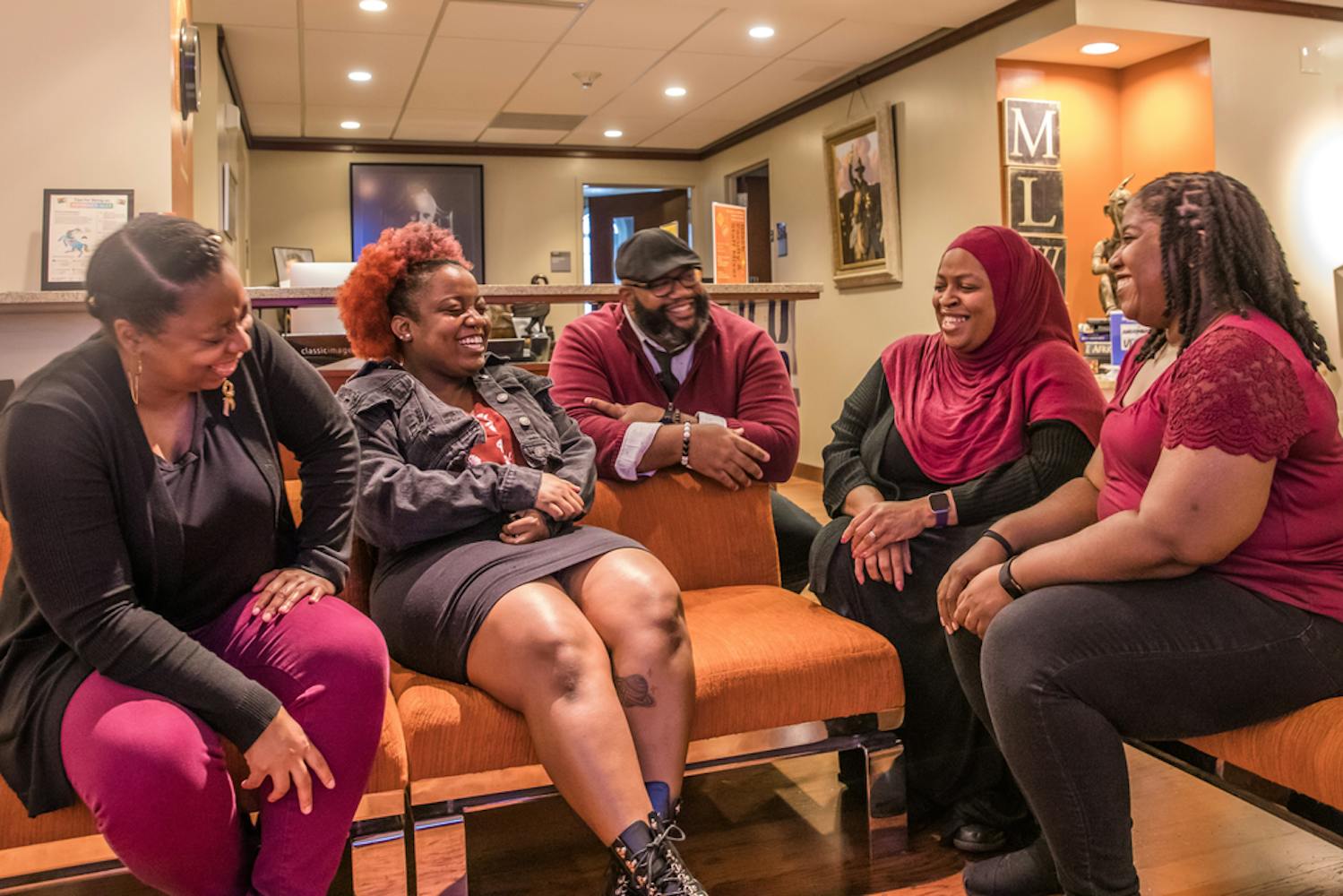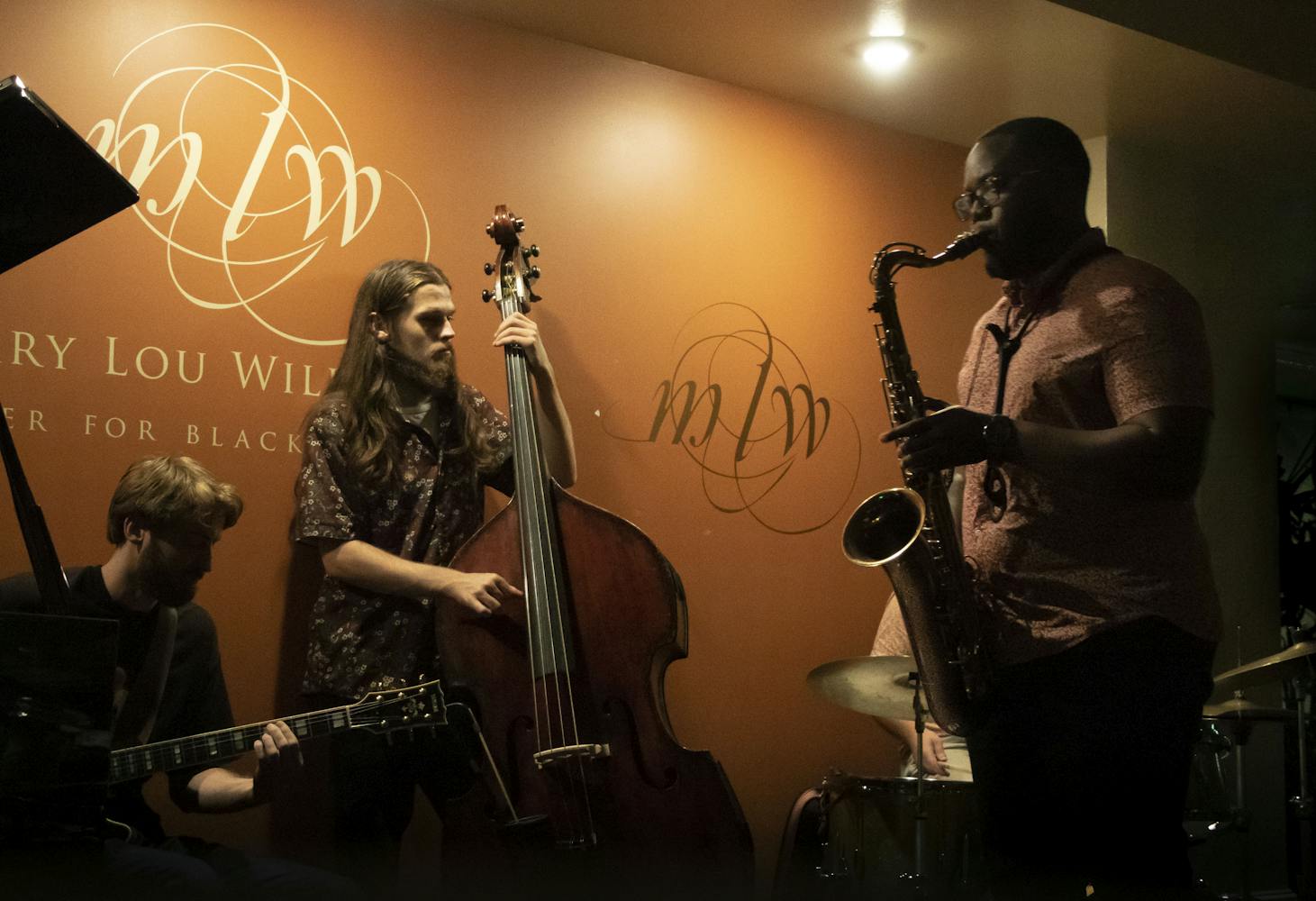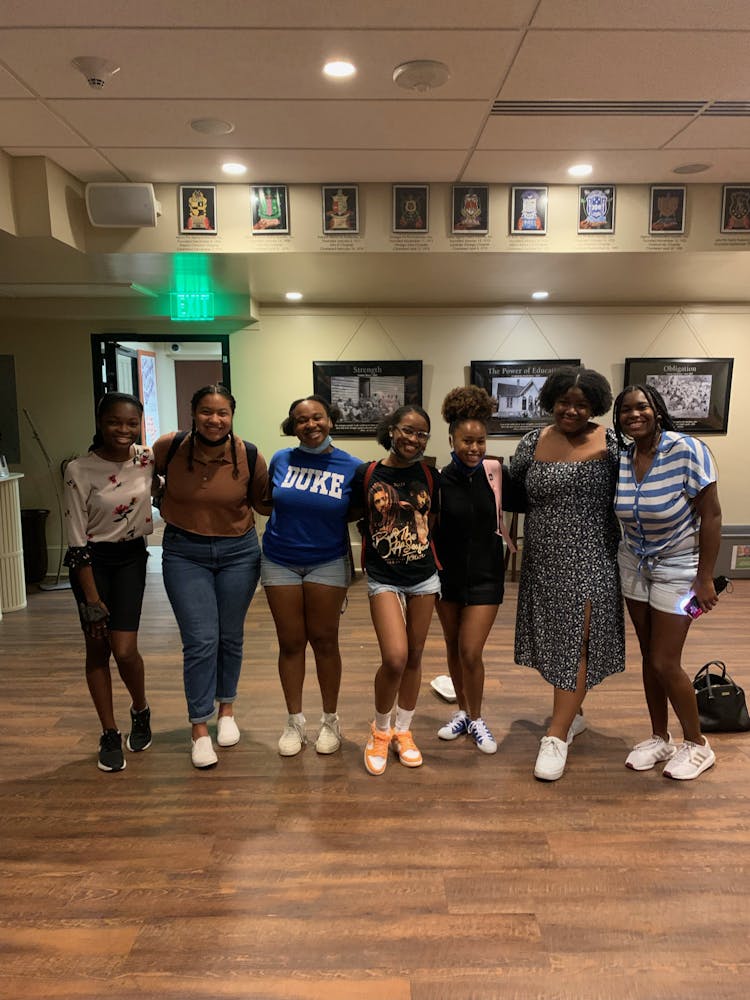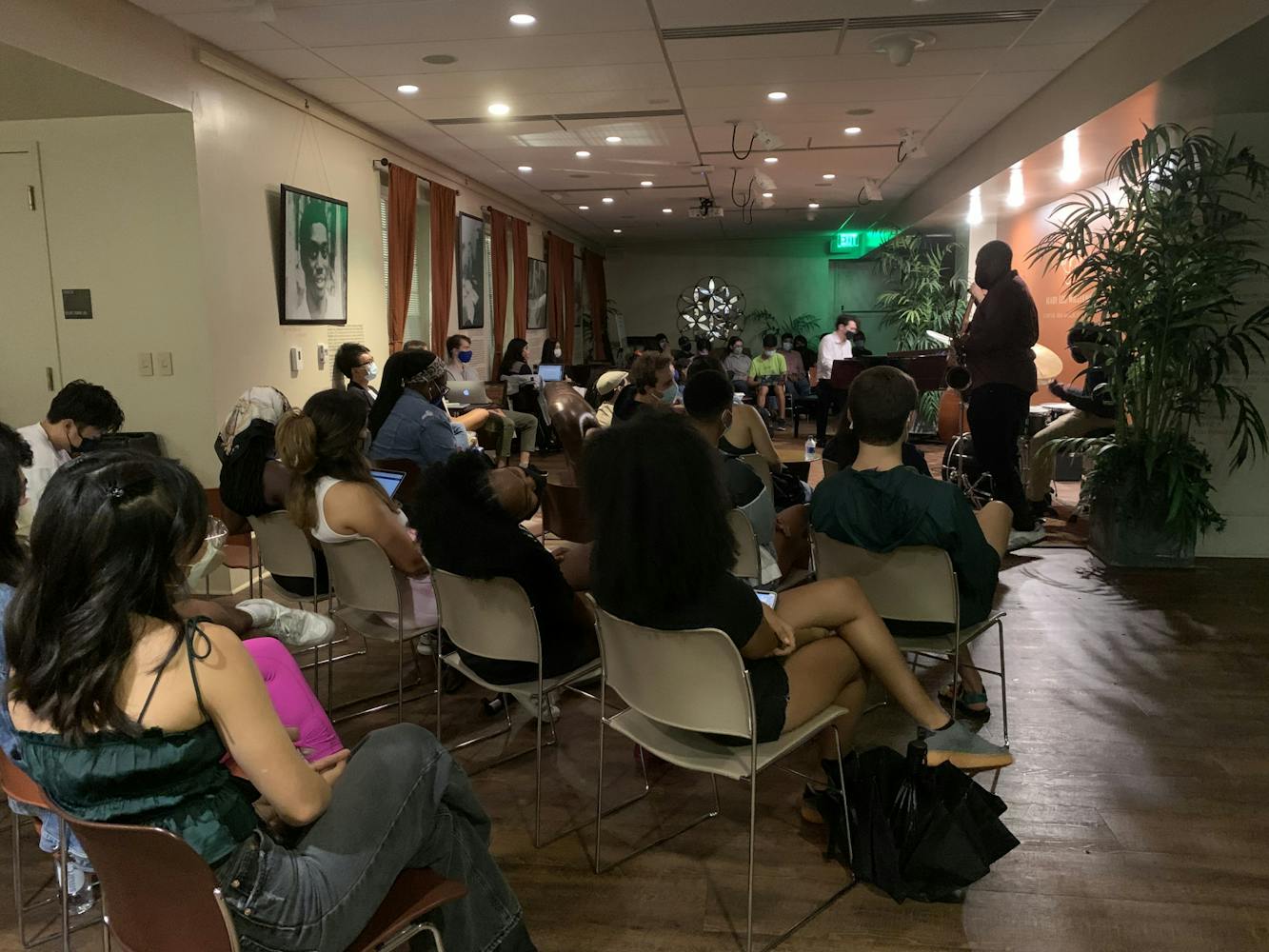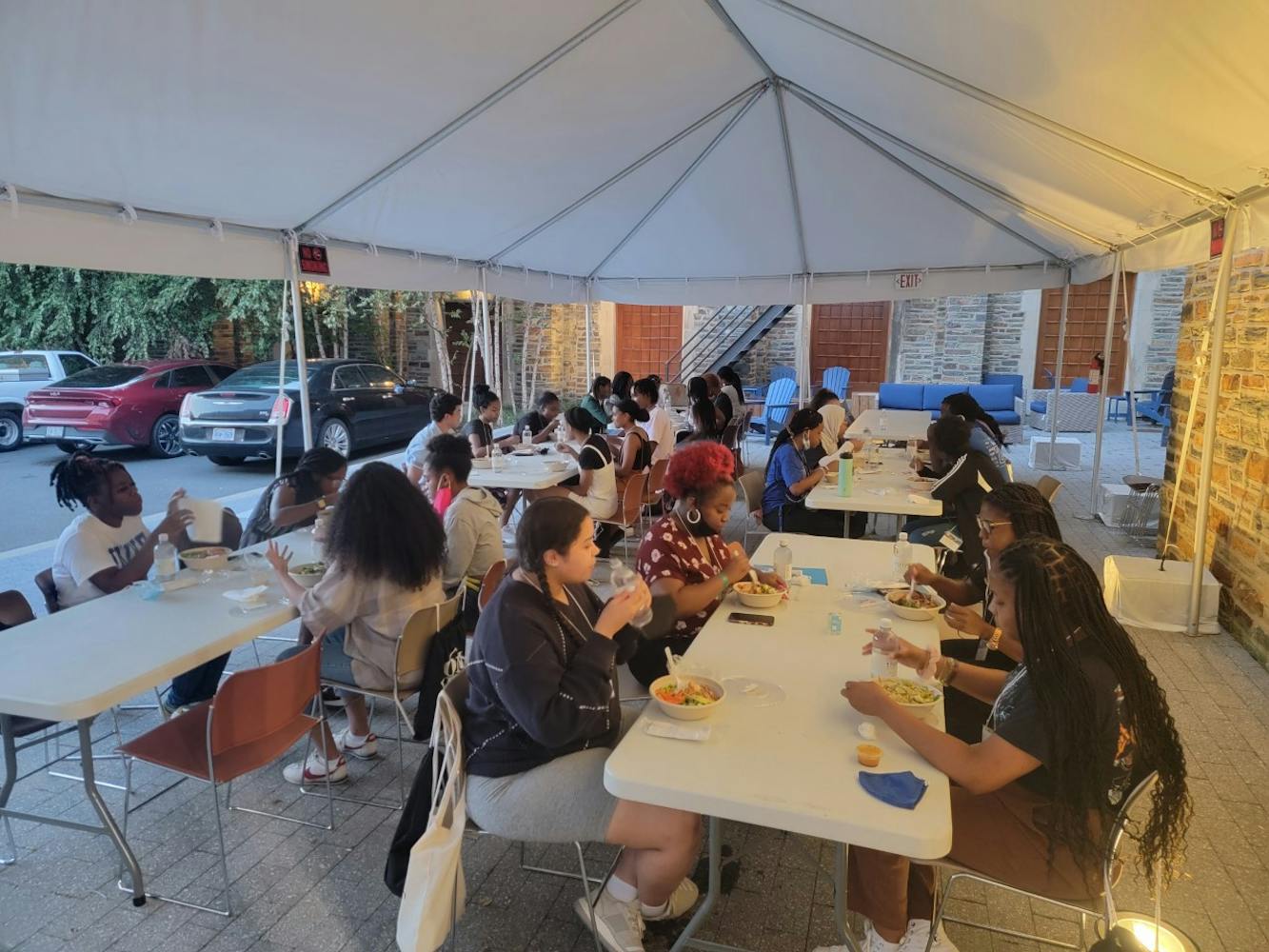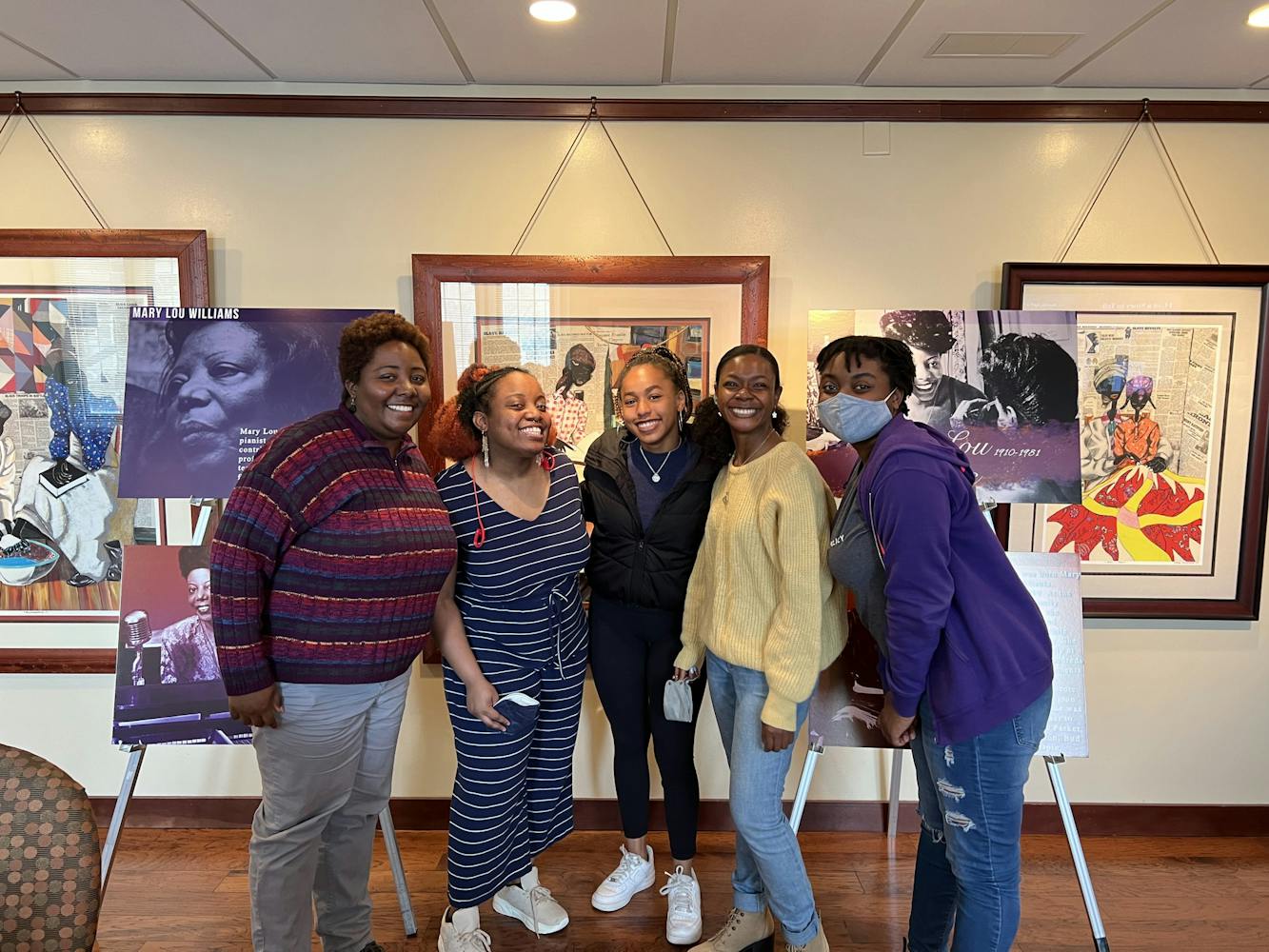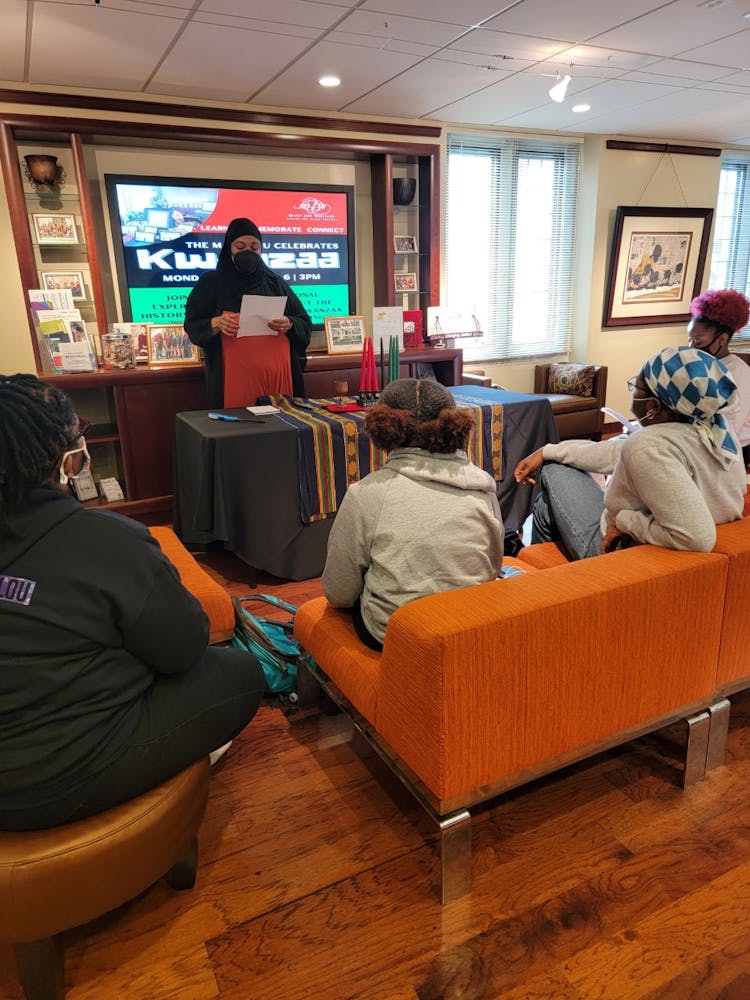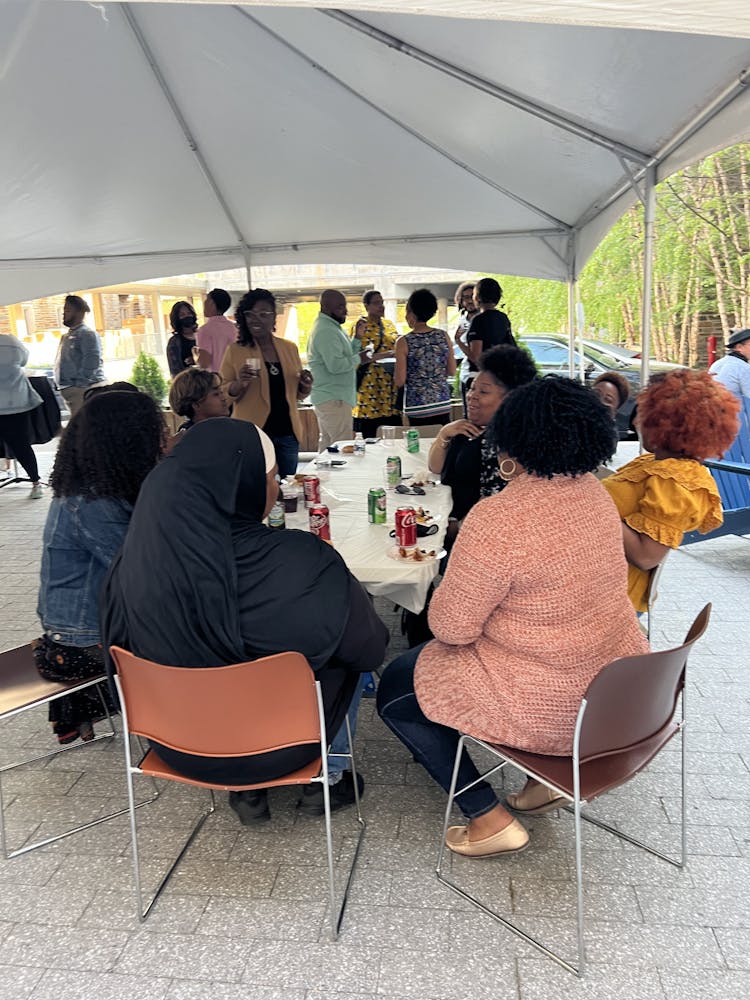The Mary Lou Williams Center was a place that exuded safety and warmth, sophomore Tiana Clemons said, sitting on a bright blue bench on Abele Quad. She described a typical weekday. A gentle light would stream in through the windows. Some students studied diligently; others filled the space with laughter, absorbed in lively conversation. Familiar BET shows and music played in the background. It was a place, Clemons said, that felt like home.
Housed on the first floor of the Flowers building, the Mary Lou Williams Center for Black Culture — known to many simply as “the Lou” — has been a cornerstone of the Black community at Duke since its founding in 1983. Named for the renowned jazz artist and humanitarian, its mission is to “foster a safe and affirming community that supports the diverse needs of Black-identified people.”
On the morning of Sept. 26, a fitting broke on a chilled water line in the Flowers building. The water leaked into the first floor and basement, damaging ceiling tiles, flooring, drywall, furniture and finishings. According to Vanessa Roth, communications specialist for Duke Facilities Management Organization, the target for re-occupancy is next fall.
“It was honestly just kind of shock,” said Clemons of the moment she learned about the burst water line. “In the sense of, I was literally just there maybe a day or two ago … I was just there.”
She recalled the last conversation she had in the space, describing a sense of joy that was at the heart of the Mary Lou Williams Center.
Adjusting to a temporary space
In the aftermath of the incident, MLWC staff has been working around the clock to provide resources and support for the Black community.
The MLWC has been temporarily relocated to conference rooms in the Bryan Center, in rooms 105 and 109. Events such as Wednesday Night Jazz and Theology Underground, as well as Black affinity organization meetings, have shifted to various locations on campus.
It’s been a challenging transition, wrote Dawna Jones, MLWC director at the time and assistant vice president of Student Affairs for identity centers and community development, in an email to The Chronicle.
“Like the community we serve, we have felt the emotional impact of losing our gathering space and the disruption of our normal routines, which include welcoming students, faculty, staff, alumni, and visitors into our space to create joyous moments and opportunities for respite,” wrote Jones.
She is encouraged by the support of campus partners, local alumni, parents and friends of the center.
“What I am missing most,” she wrote, “is the sound of students greeting each other and laughing together as they made themselves at home in the space.”
Sophomore Brianna Johnson, who works at the MLWC as an Abele Ambassador, spoke to the staff’s efforts over the past month. They’ve experimented with several ideas to make the temporary location in the Bryan Center feel more like home, from hanging up Polaroid pictures to installing a bulletin board with announcements and events.
Staff has seen more traffic from students in the past few weeks, according to Jones.
“We appreciate [the staff] because they genuinely love us and care about us. And I think that's why they're working so hard to just try to make do with what we have right now,” Johnson said. “We don't want to lose the community that we had just because we're in a different space.”
The MLWC also played a central role in hosting events for Black student affinity groups, such as the Black Women’s Union, Black Men’s Union and United in Praise. These groups have since relocated their meetings to other areas on campus, such as the Bryan Center and the Keohane Atrium.
Johnson is the choir director of United in Praise, one of the oldest student organizations on Duke’s campus. Rehearsals typically took place in the bottom floor of the MLWC twice a week. Thanks to her rapid organizing after the incident, the gospel choir’s practices have now moved to Goodson Chapel.
However, Johnson stressed, “it’s not the same, because you’re not in the Lou.”
‘A place where you can let go of that mask’
In addition to hosting organizations and programming, the Mary Lou Williams Center, with its vibrantly colored walls, artwork and comfortable couches, was a safe space for many Black students, especially at a predominately white institution. According to Johnson, having a cultural space on campus “really allows people of color to be themselves to the fullest extent.”
Get The Chronicle straight to your inbox
Sign up for our weekly newsletter. Cancel at any time.
“Being surrounded by people that you share a cultural background with, it's really uplifting, and it just facilitates much-needed personal connections,” she said. Johnson described the experience of being the only Black person, or one of few Black people, in her classes at Duke.
“Then I go to the Lou, and everyone's Black. So it's just like, okay, I'm not in this alone,” she said.
It was a feeling that many students shared in the week following the announcement.
Sophomore Rani Jones grew familiar with the MLWC and its programming during On the Way, an orientation program for incoming first-years. Jones, who was also hired as an Abele Ambassador shortly before the water line burst, described the community she found as “very welcoming.”
“Having spaces where we can just be with other people who are like us and have common experiences, just makes you feel safe. We want to get to a place where you don't have to kind of put on a front for everyone. But we're just not there yet. At a [predominately white institution], that can be kind of stressful,” she said.
Jones described the MLWC as “a place where you can let go of that mask.”
The MLWC provided her with not only a supportive community, but a study space and an ideal napping location. She smiled as she recalled hours spent on the couches.
First year Joe Asamoah-Boadu Jr. emphasized the historic legacy of the space, especially on the eve of its 40th anniversary at Duke.
“Places like the Mary Lou have not always existed. And I think that it’s important to have spaces like that for Black students,” he said.
Institutional support and University response
In light of the event, Director Dawna Jones wrote that MLWC staff received “great” support from Duke administrators, who helped them secure temporary office and programming spaces within the week. Jones also appreciated the efforts of colleagues in dining services, University Center Activities and Events, Conferences and Event Services, and Student Affairs leadership during the transition.
The days before staff secured a temporary space “felt like an eternity,” Johnson said. “We were [in the MLWC] almost 24 hours of the day. Unless I’m sleeping, I was here.”
Several students said they would have liked to see greater support from Duke administration. The only university-wide communication after the water line burst was an email from Student Affairs — one that was written and signed by Jones and other members of MLWC staff.
“The only sort of communications that we received was from the Mary Lou team, which I felt sends a particular message to the community,” wrote junior Isaiah Hamilton, president of the Black Student Alliance, in an email to The Chronicle. “One in which suggests that problems facing Black Duke aren’t of high priority to the university, and that these problems should be handled by the same community that faces them.”
Hamilton wrote that he hasn’t seen an official timeline on repairs or what the renovations will look like, but that “anything less than a complete renewal is insufficient.”
Visions for a renovated MLWC
Students have differing visions for a renovated space next fall. Some hope that it will stay as true to the original as possible. Rani Jones spoke to the MLWC’s ability to reflect the diversity of Black students on campus through artwork.
“I think [the space] did a pretty good job of incorporating a lot of different elements of cultures across the diaspora, without feeling too like a museum or too cluttered or tacky,” she said. “My biggest concern is [that] I don't want it to be super modernized. I don’t think that would really work. We have tons of buildings like that at Duke.”
Others wish to see the space revitalized. Though they too want to retain the MLWC’s atmosphere, they hope for updates like newer furniture and a more modern television. The MLWC staff is actively seeking student input for the redesign, according to an Oct. 31 newsletter.
Roth wrote that “the renovation cost will be determined once the design is complete and construction bids have been obtained.”
‘It’s about the relationships and the love’
Hamilton wrote that in recent years, the Black community has faced several issues at the University, ranging from the tearing down of Central Campus to multiple instances of targeted hate speech and bias.
The community’s response to the incident “showcases the level of resiliency and bravery of the Black Duke community to continuously weather these storms,” he wrote.
“A lot of community-building has fallen on the shoulders of student leaders in response to these changes, and I think there should be a serious conversation to determine where the responsibility of the students should end and the responsibility of [the] University starts as it pertains to DEI work,” he wrote.
But above all, students emphasized that, despite the temporary loss of the space, the meaning of community transcends the physical.
To Johnson, community now involves a renewed sense of intentionality. Without a physical space, it takes more effort to connect and coordinate busy schedules. Yet, she hopes that people will work to maintain the deep friendships and bonds fostered within the MLWC.
“I don't want people to lose sight of the community that has been built and developed and poured into for so long just because we don't have our usual physical space,” she said. “Because community is not about the space. It's about the relationships and the love, genuinely.”
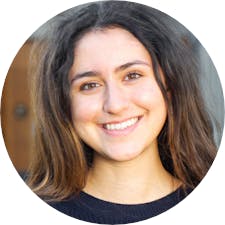
Sevana Wenn is a Trinity sophomore and features managing editor of The Chronicle's 118th volume.

